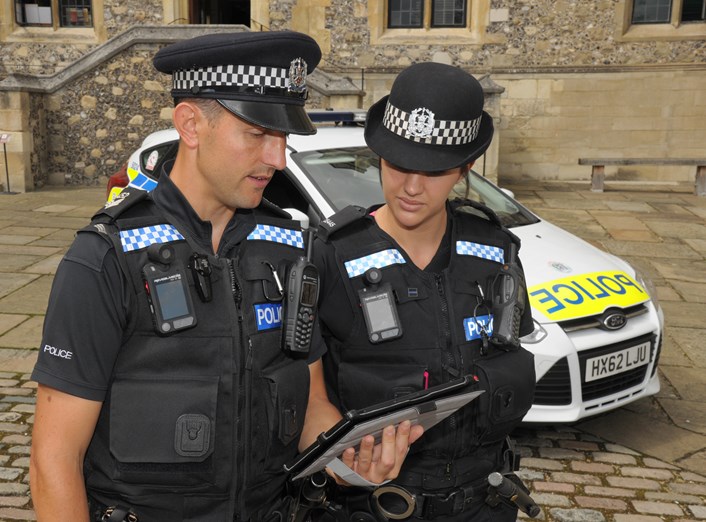28 Oct 2016
CC Francis Habgood Blog: Police ranks – a time for change? October 2016
A model of policing for the future is one that continues to protect the public but rewards and recognises officers and staff for the role they play in doing so. As the operational pressures on policing change and the financial pressures continue, the service will need to adapt to meet the challenges.
The Metropolitan Police’s recent decision to remove the chief inspector and commander ranks has raised questions by officers and staff about the future of police ranks and I wanted to update you on the work we are doing.
Leadership happens at every level in policing, whether you are a constable or a chief constable, whether you hold a warranted rank or a staff grade, whether you are a special constable or other volunteer.
Last year the College of Policing, which is the first professional body for the police, published a leadership review which looked at the context policing will operate in over the next 10 to 15 years and beyond.
As part of the review’s consultation, many working in policing said a reduction of bureaucracy would bring wider benefits to communication, innovation and decision making. Interestingly, at times of crisis or planned events, policing already reverts to a flatter organisational structure. The gold, silver, bronze model provides a role based, rather than rank based, structure with clear lines of communication, decision making and accountability.
I took responsibility for reviewing the ranks and staff grades in policing working with a group of officers and staff from several forces. We identified a model that defines the levels in a healthy organisation according to the complexity and time horizon of the work.
Across the world international companies, government departments and the American military who have turned to the work of organisational psychologist Elliot Jaques. His five level model found that if you stagger hierarchy across the levels you empower your staff, avoid unnecessary bureaucracy and ensure that your managers add real value.
A form of hierarchy remains necessary in policing and the five level model offers this while allowing leaders to do what they are best equipped and positioned to do – motivate and empower. The leadership review envisaged a future for policing with more emphasis on what police officers and staff know, not what rank / grade they hold. It was clear that the review of ranks and grades needed to go beyond the narrow constraints of looking at the rank structure and has encouraged the service to be innovative and creative in its organisational design.
We reviewed existing research on organisational structures, considered the experiences of forces who have previously adapted their structures and held workshops to get views of police officers and staff. We found a growing evidence base in policing to support using the five level model and developed a set of principles to help forces apply the five level model to develop a healthy organisational structure. That means thinking less about what rank someone holds and more about their role in the organisation or team they work in.
For example, small teams that have officers and staff at every rank or grade and teams where there are limited numbers of line reports reporting into a manager should be particularly scrutinised to test whether each level is really necessary and adds value.
Several forces have already used these principles and made progress, for example, Greater Manchester Police has tested them against their leadership review and organisational design programme. The Metropolitan Police have also recently agreed changes to their rank structure, removing the chief inspector and commander ranks over the next 18 months as their approach to delayering. Wiltshire Police removed the chief inspector, chief superintendent and deputy chief constable ranks a few years ago as part of the redesign of their operating model.
Beyond force level, the College of Policing is using the five level model as a foundation for much of their reform. As an example, the police education qualifications framework sets educational requirements at the five levels, rather than at each rank.
The Policing and Crime Bill, currently progressing through the Houses of Parliament, proposes the removal of the current rank structure from primary legislation, except for the ranks of constable and chief constable. If agreed, the College of Policing will be given the responsibility of establishing future rank structures in consultation with the service. Whilst the current rank can be overlaid over the five levels, there are anomalies. Therefore as the workforce framework develops and forces utilise the design principles, the current rank structure will be revisited.
Until those decisions are made, the five level model gives a foundation for reform that will allow us to invest time in developing the skills of our staff so that they can be recognised as professional, autonomous decision-makers. In doing so, officers and staff will be encouraged to make decisions at the lowest appropriate level, and forces and national bodies will need to ensure that policies and procedures avoid unnecessary bureaucracy.
Contact information
Communications office
By phone: 0800 538 5058
By email: press.office@npcc.police.uk


